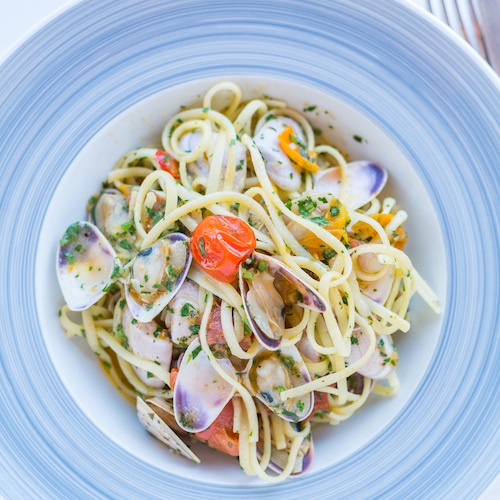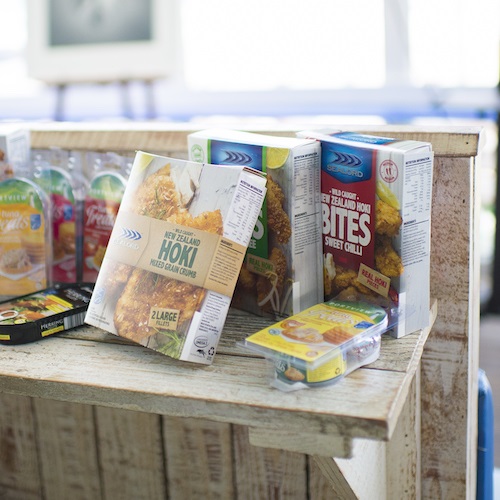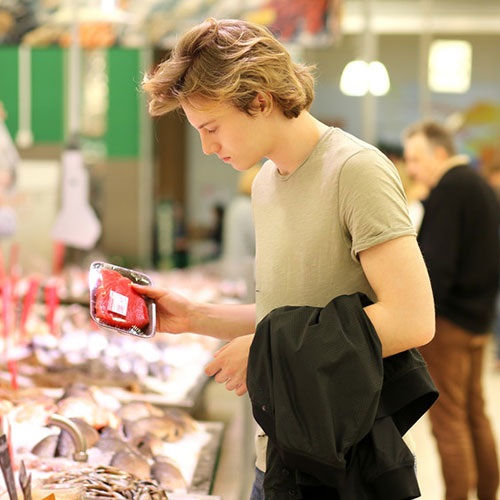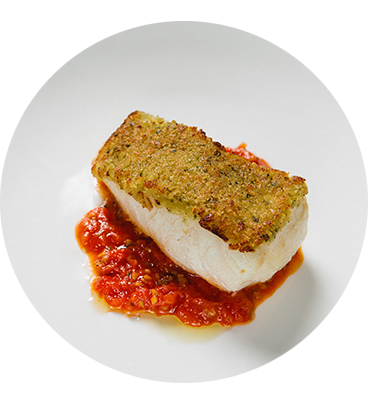Find out more about toothfish, a deep-sea fish with white, flaky, moist flesh. Find out which toothfish are sustainable and where to buy sustainable toothfish.
What is toothfish?
Toothfish (Dissostichus eleginoides, Dissostichus mawsoni), also known as Chilean seabass, live in deep waters in the southern oceans near Antarctica. Both Patagonian toothfish and Antarctic toothfish have white, flaky, moist flesh which is highly sought after by chefs for its versatility and Omega 3 fatty acids.
Toothfish facts
- Toothfish have long been studied for their ability to produce anti-freeze proteins that keep their blood from crystallising in the Southern Ocean, where water temperatures can dip below zero.
- Toothfish is a long-lived species, living for more than 50 years and reaching more than 2m in length and 95kg in weight. Its main predators are sperm whales, sea lions and elephant seals. As the fish grow, they move to deeper waters.
Is toothfish sustainable?
Toothfish have a circumpolar distribution, and there are many separate and linked toothfish populations across the Southern Ocean. Toothfish fisheries are either managed as domestic fisheries, fall under the auspices of CCAMLR, or are managed through RFMOs.
Seven separate toothfish fisheries are certified to the Marine Stewardship Council’s global standard for a well-managed and sustainable fishery, and together, these fisheries represent over 50% of the global catch of toothfish.
- South Georgia Patagonian toothfish fishery
- Falkland Islands Patagonian toothfish fishery
- Heard Island & McDonald Islands Patagonian toothfish fishery
- Macquarie Island Patagonian toothfish fishery
- Ross Sea Antarctic toothfish fishery
- Kerguelen Island Patagonian toothfish fishery
- Crozet Islands Patagonian toothfish fishery
Where can I buy sustainable toothfish?

You can find the blue fish tick on Glacier 51 Toothfish, available from specialty seafood retailers.
Find out more about where to buy sustainable seafood.
Toothfish recipes
Enjoy this delicious Wild herb crusted toothfish with roast tomato sauce recipe from Neil Perry.Learn more about toothfish fishing
The majority of toothfish is caught with demersal longline gear, fishing at depths between 500m and 2000m. Hooks are typically baited with squid or mackerel species. Bycatch in toothfish fisheries is considered very low relative to the target species catch.
Most toothfish fisheries have seasonal closures to minimise risk to vulnerable seabird populations that reside on these sub-Antarctic islands, in addition to other stringent seabird mitigation requirements. One of the success stories within the toothfish industry is the dramatic reduction of seabird bycatch to what CCAMLR considers ‘near zero levels’.
Thanks to collaborative efforts over many years, the toothfish industry, CCAMLR, Governments, and NGOs have effectively eliminated illegal, unregulated and unreported fishing for these two species.
Many stakeholders recognise that effective Marine Protected Areas are designed with a clear set of conservation objectives, good stakeholder consultation, and effective management.
Stakeholders often include recreational fishers, commercial fishers, environmental groups, and community bodies. Balancing these groups' priorities and the need for conservation is important to ensuring success. These groups can contribute hugely to understanding and mitigating any economic and ecological risks from implementing a Marine Protected Area.
Beating bird bycatch
Seabird bycatch can be a serious problem. A survey by BirdLife in 2011 estimated that up to 300,000 birds were killed around the world every year after becoming ensnared on longline hooks.
Explore more sustainable fish to eat
Find more sustainable seafood species that are MSC certified in Australia and New Zealand.
Explore the sustainable seafood guide.


Sustainable seafood recipes
Chefs and seafood lovers from around the world share quick and tasty ways of cooking MSC certified seafood.

10 reasons to choose the blue fish tick
Choose seafood which helps to protect oceans, livelihoods and fish for the future.

Buy sustainable seafood
Where to find the blue fish tick at supermarkets, fish shops and restaurants.


